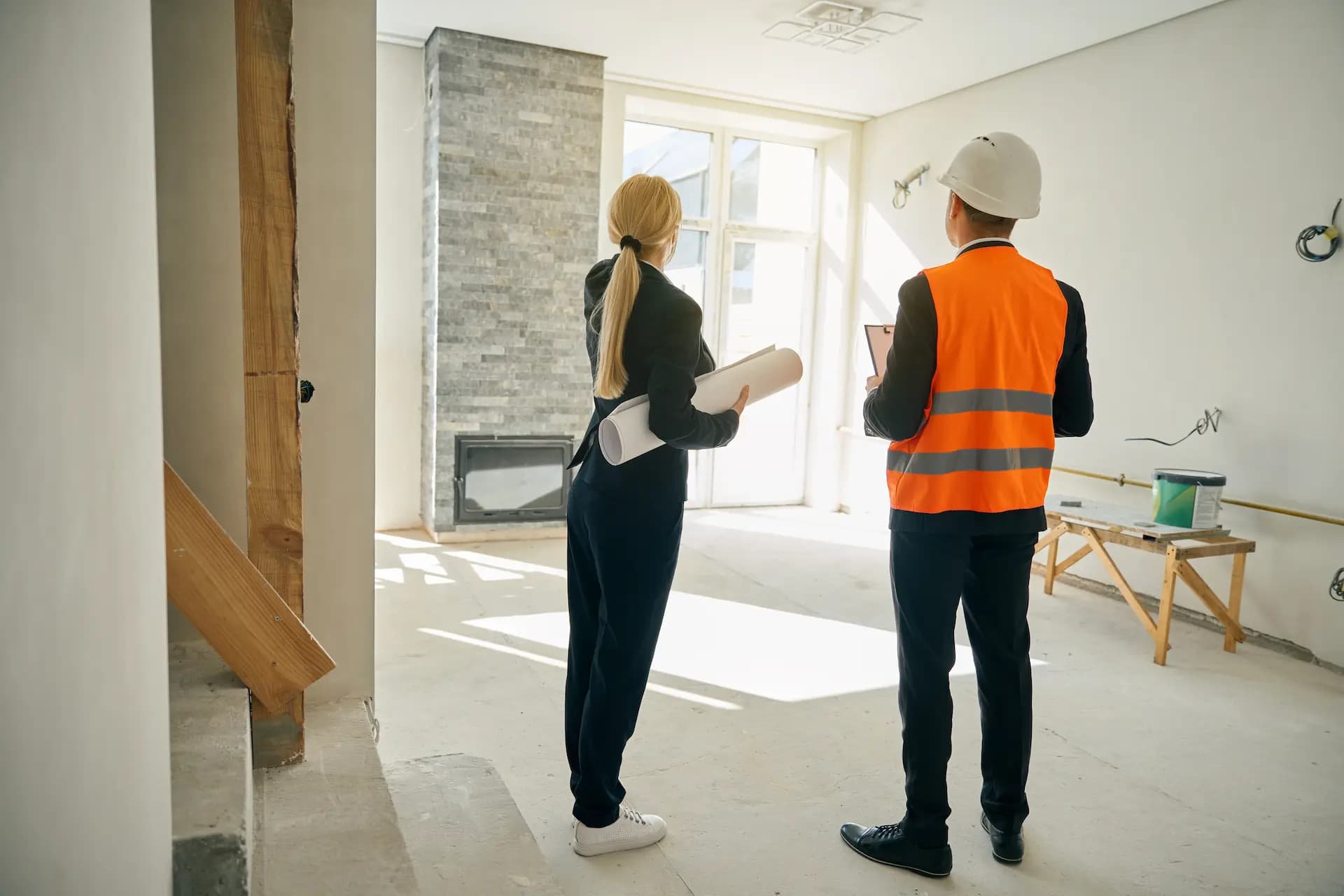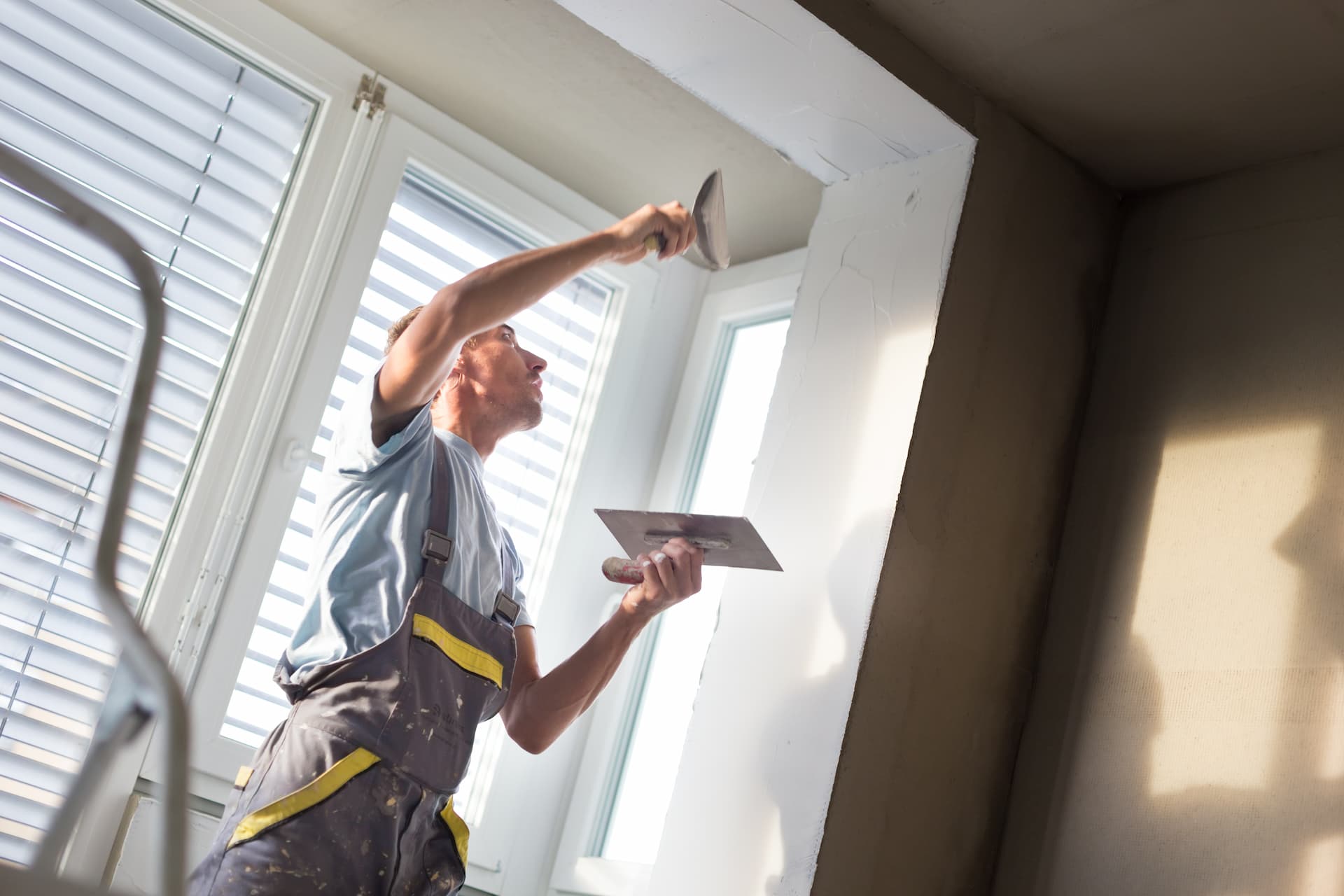What Not to Fix When Selling a House: Save Time, Money & Stress
October 14th, 2025 / Author: Cesar GomezSelling your house can feel like one long to-do list. The pressure to impress prospective buyers often leads homeowners to overspend on repairs and upgrades. The leaky faucet, the cracked tile, the outdated kitchen cabinets… but this “fix-all” mindset can kill your profit.
Here’s the truth: not everything needs fixing before you put your house on the market. In fact, knowing what not to fix when selling a house is just as important as knowing what needs your attention, and can save you thousands of dollars, weeks of time, and endless stress.
The trick is understanding which repairs actually add value to your home sale and which ones don’t make a significant difference. Over-fixing can waste time and money and even push potential buyers away. In this article, we’ll cover all the essentials, from cosmetic updates to major overhauls, and explain why less is often more. By the end, you’ll know exactly what’s worth your effort, and how selling a house that needs repairs can still work to your advantage.
Why You Shouldn’t Try to Fix Everything when Selling Your Home
It’s tempting to see every crack, chip, or squeak as something that could scare away buyers. But buyers don’t expect perfection. Most assume they’ll make changes once they move in anyway. If you try to fix everything, you’ll run into four big problems:
-
Diminishing returns. Some fixes cost more than they add to your sale price. For example, a full kitchen remodel might cost $30,000 but only add $15,000 to your home’s value. That’s money out the window.
-
Taste mismatch. Your new gray-and-white kitchen may look sleek to you, but the next buyer might prefer bold wood tones. What you love might be exactly what another person would rip out. Spending big on aesthetics and style is risky because tastes vary widely.
-
Time risk. Home repairs almost always take longer than planned. If you’re trying to sell your house fast, major upgrades can delay your timeline by months and push back your sale.
-
Inspection surprises. Even after your efforts, the buyer’s home inspection report will almost always uncover more. They’ll often use those issues to negotiate the price down anyway.
So, instead of panicking over every blemish, the solution is focusing only on the repairs that matter most. Let’s break down the areas where you can save your money.
Cosmetic Updates vs. Deep Renovation
A lot of what home sellers wrestle with is differentiating between cosmetic updates and deep renovation. Cosmetic updates include things like:
-
Fresh paint (neutral colors)
-
New light fixtures
-
Cleaning / decluttering / staging
-
Lawn maintenance, trim, exterior clean-up
-
Window treatments, updating small hardware
Deep renovations or full remodels include: kitchen renovation, bathroom remodel, major structural changes, adding rooms, etc. Cosmetic updates are cheaper, quicker, and generally yield positive ROI if done properly. Deep renovations are riskier — you may not get the full cost back, and they delay the home sale process. On that note...
What Not to Fix When Selling a House

Your ultimate goal is smart repairs, not a full rehab. That's why you need to be strategic with what you choose to spend time and money on. Below is a detailed breakdown of what not to fix when selling a house. Use it as your “don’t bother fixing” checklist to avoid overdoing repairs.
-
Major Cosmetic Overhauls
Big renovations like a total kitchen remodel or bathroom remodel almost never pay off. While they make the space look beautiful, the return on investment is usually poor and rarely recoups the full cost. Buyers often walk in and imagine their own upgrades anyway. The same goes for replacing all your light fixtures with high-end models.
If the current ones work and look decent, leave them. Luxurious decorative upgrades such as designer wallpaper and custom built-ins often appeal only to niche buyers, as well. Buyers want to make their own style choices, not inherit yours.
-
Minor Cosmetic Flaws & Everyday Wear and Tear
A few wall scuffs, slightly worn hardwood floors, or dated window treatments are normal in a lived-in house and don't really affect your home's value. So, don’t obsess over replacing flooring or redoing trim just to make everything look brand new. Buyers don’t expect a home to look like a showroom – they expect it to feel functional and welcoming. A quick touch-up with neutral paint colors in a few key areas to freshen up and provide a blank canvas for prospective buyers will do more good than trying to erase every scratch.
-
Appliances That Still Work
If your dishwasher or stove isn’t the newest model, that’s okay. Unless they’re broken, don’t replace them. Buyers may prefer to bring in their own appliances to match their style and budget. Spending thousands on brand-new appliances or smart home technology right before you leave is one of the most common money drains in the home-selling process. What you could give a thought to is investing in energy-efficient appliances, which attract eco-conscious buyers and also lower utility costs, making your home more attractive.
-
Major Window or Door Replacements
Unless you’re dealing with severe water damage or failing seals, you don’t need to replace old windows or your garage door. Buyers often factor in the cost of new windows or doors themselves. If your windows open, close, and lock properly, that’s enough.
-
Landscaping Overhaul
Good curb appeal matters, but don’t go overboard. You don’t need a brand-new lawn, a full set of flower beds, or expensive stone pathways. Stick to basic lawn maintenance: mow the grass, trim the bushes, and clean up weeds. A tidy yard shows care without making buyers suspicious about hidden costs hiding under the over-the-top curb appeal.
-
Nonessential Structural Upgrades
Unless you have major structural problems that affect safety or financing, don’t rush into big projects like foundation rework or attic conversions. These projects are time-consuming, expensive, and often unnecessary for a successful home sale. Buyers may even prefer a lower price and the freedom to tackle these improvements themselves.
-
Cosmetic Tile and Grout Work
If the bathroom tiles are intact but look a little dated, leave them alone. Don’t invest in a complete re-tiling job. Buyers often budget for these kinds of cosmetic home improvements and would usually rather pick the style themselves. A deep clean is usually enough. Leave what’s tolerable.
-
Full Electrical Overhauls
Electrical problems tied to safety must be fixed. However, if your electrical wiring and electrical outlets are functional and up to building codes, don’t replace them just because they’re older. A full rewire is expensive and unnecessary if the system works safely.
What You Should Fix Before Selling Your Home
Although there are plenty of things that you should not spend money and time fixing, not everything can be ignored. Some repairs are wise and even necessary for a smooth home sale and avoiding a deal falling through after the inspection – especially those that hurt safety, violate codes, or kill buyer confidence. Let’s call these the “must-repair” list.
Essential Repairs
Some critical issues aren’t optional. Leaving them unfixed will almost always tank your sale price or even potentially kill the sale.
-
Safety hazards like loose stair railings, exposed wiring, or broken steps. These are dealbreakers and can even prevent financing.
-
Water damage and plumbing problems such as leaks, clogs, or broken pipes. Water issues create bigger worries about hidden damage.
-
Pest infestation or mold. These scare buyers more than anything else. They see this as a red flag and often walk away.
-
HVAC system breakdowns. If your home can’t heat or cool properly, buyers will move on fast.
-
Major structural problems. Large cracks, foundation issues, or roof leaks fall into this category.
-
Building code violations or things that prevent appraisal/finance.
Smart, Low-Cost Fixes
Some small touches have a big impact without costing much:
-
Touch-ups like filling holes, patching dents, and applying a fresh coat of paint in living spaces. Interior paint in a neutral palette tends to be one of the highest-ROI cosmetic updates, sometimes >100% ROI.
-
Fixing broken handles, knobs, faucets, and cabinet doors.
-
Replacing outdated or broken light fixtures with simple, inexpensive options, or replacing burnt-out bulbs.
-
Hiring a carpet cleaner to refresh worn areas.
-
Cleaning exterior elements like gutters and siding.
These aren’t full-blown renovations, but smart and quick tweaks that improve first impressions without draining your budget.
Market Conditions and ROI

“Should I fix X?” depends heavily on current market conditions. In a hot seller’s market, where inventory is low and buyers compete for homes, you can get away with skipping many fixes. Buyers may overlook flaws if they’re desperate for a house. In a buyer’s market, however, where homes linger on the slow market, even small defects are scrutinized, giving buyers bargaining power, which they use to push the price down.
Use a proper market analysis to guide your decisions. Combine that with a look at your local neighborhood trends, and you’ll see whether your efforts will pay off or if they’ll be wasted. Also, weigh the return on investment (ROI). A lot of major renovations often recover only a portion of their cost. If you spend $20,000 on a new kitchen, but that adds only $10,000 to your sale price, it’s a net loss.
Always ask yourself: “Will this repair increase my home’s value more than it costs?” If the answer is no, skip it.
Use Knowledge to Your Advantage
You’ll find plenty of lists online insisting on big pre-listing improvements. But many of these lists blend good advice with unnecessary expenses. Here are some overarching principles to help you decide what to repair before selling a home:
-
Do a pre-listing inspection. This can help you understand what’s truly urgent and get ahead of what buyers will find. You’ll see what major issues are deal breakers vs what are cosmetic. Use the inspection report to prioritize what actually needs fixing and which buyer-requested repairs you can negotiate or offer credit instead.
-
Focus on visible, first-impression issues, not hidden ones (unless they affect safety or financing).
-
Avoid projects you can’t complete quickly. Half-finished jobs scare buyers and often cause price reductions.
-
Respect neighborhood comparables. If homes in your area are being sold upgraded, buyers may expect similar. But don’t over-improve compared to your comps – it may not pay off.
-
Think like a buyer. What would you notice first when walking in? Curb appeal, light fixtures, clean windows, clean smells, working essentials.
-
Keep in mind that a real estate professional may suggest repairs, but remember, they’re often focused on making your home easier to market, not necessarily maximizing your profit.
Understanding what not to fix when selling a house is just as important as knowing what’s worth fixing in order to maximize your return on investment. The most important fixes are tied to safety, financing, and functionality. The rest? Optional. This is why it's important to know which upgrades have a real impact vs which are just money pits.
Selling a House That Needs Repairs Fast? It's Possible with Sleeve Up Homes
What if your home needs a lot of work that you're simply not up to? That doesn’t mean you’re stuck. Selling a house that needs repairs is entirely possible; you just need the right strategy. When you sell a house "as-is," you’re telling buyers up front that you won’t make repairs. They’ll purchase it in its current condition. The benefits are clear:
-
No wasted time on renovations
-
No stress coordinating contractors, real estate agents, listings, and open houses
-
Faster home sale journey
The challenge is that buyers will discount their offers. But you can offset this by finding the right buyer - one who specializes in as-is home purchases. This is where SleeveUp Homes comes in. We specialize in buying homes exactly as they are, in any condition, for cash and top dollar. Here’s what makes us different:
-
We buy homes as-is directly from homeowners – no real estate agents, no repairs, no stress.
-
We provide a fair all-cash offer after assessing your property and never lowball.
-
We guarantee to pay $10,000 more than any other legitimate offer.
-
No fees, no hidden costs – we even take care of closing fees and paperwork.
When you sell with us, you skip the constant worry of whether you should fix this or that. No stressing about fixing broken items, no pre-listing inspection surprises, and no scrambling to hire a contractor or impressing a buyer. Instead, you get cash in hand, a straightforward process on your terms, and peace of mind. You can sell in as little as 7 days, or take more time if needed – we work around your schedule.
Pick Your Property Fix-Up Battles Wisely
Selling your home at a fair price doesn’t mean you have to fix every scratch or upgrade every feature. Trying to fix everything is a trap. It costs too much, adds stress, delays your sale, and often doesn’t add enough to your market value or sale price to justify the expense. Knowing what not to fix when selling a house keeps you from wasting money and energy on projects that simply don’t pay off.
Focus on safety, code, and function, and don’t worry about making everything perfect. Use a pre-listing inspection to guide you. Understand your market conditions and what upgrades buyers in your area expect. And if all of that feels overwhelming, remember there’s an easier way. Selling your house as-is to a cash buyer like SleeveUp Homes can give you a fair, fast, no-hassle deal.
Request an offer for your property today to turn selling your home from overwhelming into a simple cash sale.
FAQs
Anything else on your mind?
What Is Worth Fixing Before Selling a Home?
It’s usually worth fixing safety hazards and minor, high-impact issues that improve a buyer’s first impression. Focus on:
-
Curb appeal: landscaping, fresh paint, clean windows, and a tidy yard.
-
Cosmetic repairs: patching holes, cleaning dirty carpets, and adding a fresh coat of paint in high-traffic rooms.
-
Functional fixes: repairing leaky faucets, squeaky doors, or faulty light switches.
-
Safety concerns: fixing loose railings, broken steps, HVAC breakdowns, as well as major electrical and structural issues.
These small, low-cost repairs can make your home look well-maintained without sinking money into major renovations you may not recoup.
At What Point Is a House Not Worth Fixing?
A house is generally not worth fixing when the cost of repairs exceeds its after-repair value (ARV). Common signs include:
-
Extensive structural damage (foundation, roof, major plumbing).
-
Outdated systems that require full replacements (HVAC, electrical, plumbing).
-
Neighborhood value limits where upgrades won’t increase resale price.
-
High repair-to-value ratio, where renovation costs are higher than what buyers will pay.
When the time and cost of repairs outweigh the potential gains in sale price or you need to sell fast, that’s when selling the house as-is to cash buyers or investors is often the smarter financial choice. For many, this tipping point comes when repairs exceed tens of thousands of dollars.
What Devalues a House the Most?
Ultimately, a house loses the most value when buyers see it as too costly or risky to repair. Issues that scare off buyers and take the biggest cut out of market value include:
-
Deferred maintenance and visible defects (water damage, cracked walls, rotten wood, roof leaks, mold).
-
Major safety concerns and code violations (outdated or unsafe systems, like electrical wiring or plumbing issues, missing smoke/carbon detectors, and structural damage).
-
Poor location factors (high crime rate, noise, or proximity to undesirable sites).
-
Poor curb appeal that gives buyers a negative first impression, such as overgrown lawns and cracked driveways.
What not to say when selling a house?
When selling a home, never lie or try to cover up issues with your property. Being dishonest can backfire through inspections, appraisals, or legal disputes. Instead, focus on presenting the home in its best light while being transparent about required disclosures. Avoid comments that weaken your negotiating power or raise red flags, such as:
-
“We’re desperate to sell.” – Signals buyers they can lowball you.
-
“We’ve had no offers.” – Makes the property seem undesirable.
-
“We’ll take the first offer we get.” – Undermines your leverage.
-
“The neighborhood isn’t great.” – Shifts focus to negatives beyond your control.
-
“It just needs a little work.” – Can trigger fears of hidden problems.
“We already bought another home.” – Reveals pressure to close quickly.
SELL
YOUR HOUSE
If you want to sell fast and are worried about how long the traditional process takes, and the commission and fees involved, consider working with SleeveUp Homes.





 view all blogs by this author
view all blogs by this author Zachariah Peterson (69 blogs)
Zachariah Peterson (69 blogs)